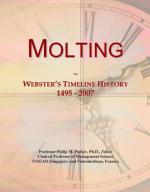|
This section contains 730 words (approx. 3 pages at 300 words per page) |

|
One of the general characteristics that defines the phylum Arthropoda (which includes insects, spiders, and crustaceans) is an external skeleton, also called an exoskeleton. The arthropod exoskeleton completely covers the outside of the body and the muscles inside adhere to it. Exoskeletons are hard and protect the body. Because the exoskeleton is hard and rigid, an arthropod cannot grow unless it sheds its old exoskeleton and secretes a new one. This process is called molting.
Arthropod growth is limited to molting, so growth happens in steps rather than continuously. The stages between moltings are called instars.
 A cockroach shown after molting, next to the skin it shed.
A cockroach shown after molting, next to the skin it shed.
Warmer temperatures and more food and water can...
|
This section contains 730 words (approx. 3 pages at 300 words per page) |

|


